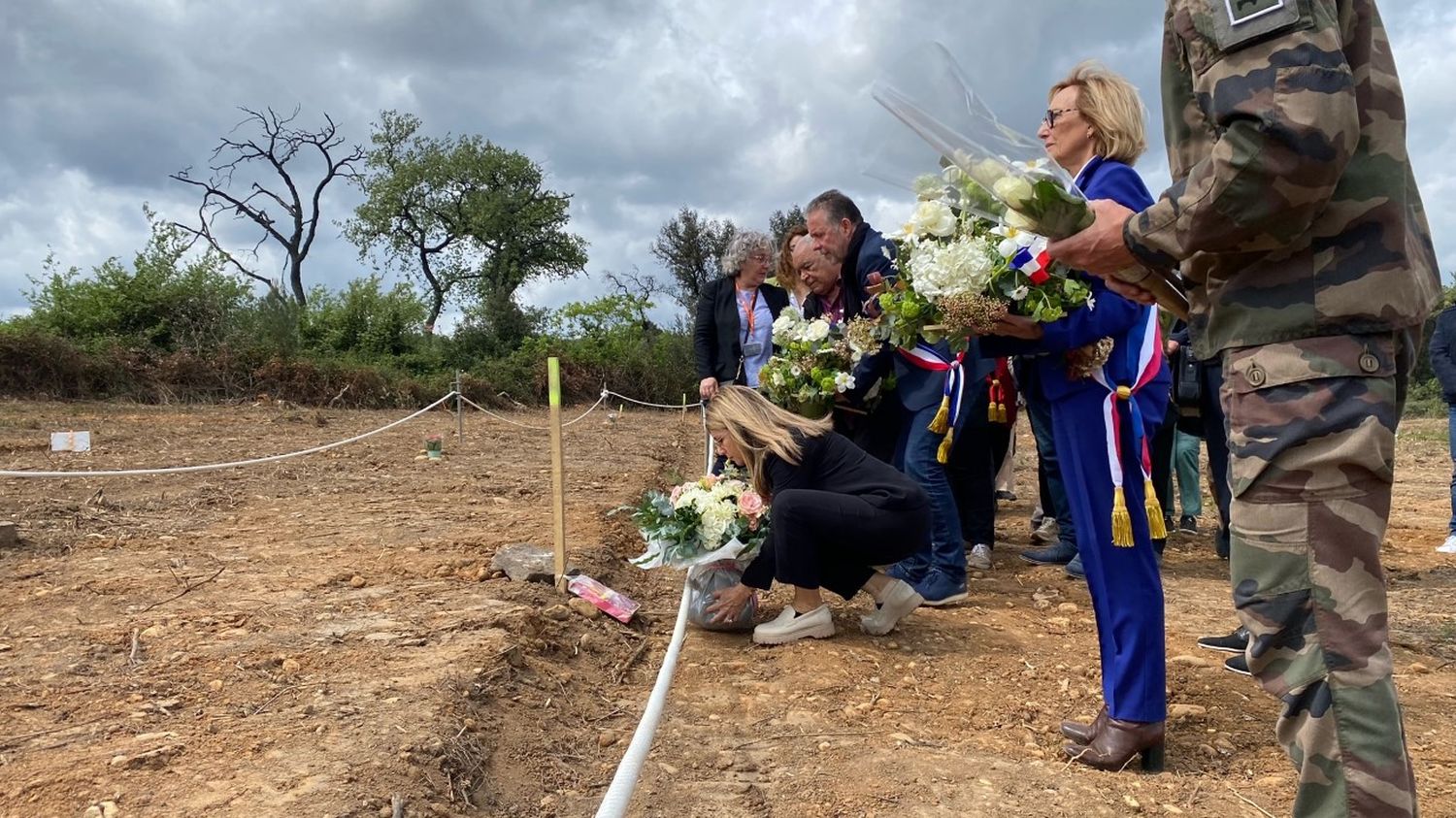In the Gard, archaeological excavations have unearthed a wild cemetery, containing the bodies of around thirty infants, near two former harkis camps. The Secretary of State for Veterans, Patricia Mirallès, announces, during a ceremony on Friday, the creation of a memorial.
A few months ago, there were only brambles and small holm oaks growing on the sandy soil of the camp of Saint-Maurice l’Ardoise, facing Mont-Ventoux in the Gard, about twenty kilometers north of Avignon. But since archaeological excavations began, the plot has been cleared. On the spot, on fifty meters, about thirty small graves of children were discovered. Most are infants. These children died in the two Harki camps located a few kilometers from this burial place long forgotten or even hidden by the State.
>> Algerian War: Parliament definitively adopts the “reparation” bill in favor of the harkis
This is a dark new page in the history of the harkis, those Muslims who fought alongside the French during the war in Algeria, which is being written in France. Archaeological excavations have uncovered a small wild cemetery dating from the 1960s. The Secretary of State for Veterans and Remembrance, Patricia Mirallès went there on Friday April 21, accompanied by the families of Harkis.

The small graves are surrounded by a white rope, there are also bouquets of flowers. It is Aida Seifoune83, who approaches the graves slowly and with difficulty. His son is buried here. From her arrival in 1962, at the harkis camp, she remembers the cold that winter, the snow and the birth of her child. “When the baby was born I took him to the doctor and he said ‘it’s fine, he’s fine’ but he died the next day.” Nadia, his daughter, says: “When mum had her baby, she showed him to the doctors. But my brother Raoul died early in the morning in his arms. She told me that the soldiers had taken the baby without even telling him where they were going. bury. And so apparently, today, we would have discovered bones here.”
The remains of two children found
“like dogs”, judge Aïda to qualify the way in which the bodies were treated, “like animals” adds his daughter, “without any empathy, they were picked up and thrown on the ground like that”. “It touches and it hurts, just talking about it hurts, testifies Aida, even for mom, it brings back her suffering.”
But paradoxically, it is also a relief for some families. Know, finally, where all these children are buried. And that, the families owe it to one person, Nadia Ghouafria, daughter of harki herself. She recently discovered in the departmental archives a document which contained a burial register mentioning the presence of 31 graves, including 30 belonging to children, which made it possible to start the excavations and to lead today to the discovery of the place of the burial. At this stage of the search, archaeologists have been able to find the remains of two children.

“It’s a mixture of emotions. I’m satisfied but angry, angry to know that these deceased have been abandoned”explains Nadia Ghouafria. “The children buried on this plot died as a result of the living conditions, the cold, hunger, disease. We wanted to hide the living conditions unworthy of the harkis and their families”develops the daughter of harki.
What responsibilities?
The families directly challenge the state. A document that franceinfo was able to consult proves that the authorities knew that this wild and abandoned cemetery existed. Before retiring in 1979, the director of the camp of harkis, a soldier, had revealed, in a letter transmitted to the services of the State, the existence of this cemetery. The letter ended as follows: “We shouldn’t make the case too public, which could have unfortunate twists.”
“Nobody is like, ‘Shit, come on, let’s do something. We are not going to leave them”. But yes, they left them like that”, strikes Rachid Bedjghit who is still looking for the remains of his brother. Indeed, in 1979, nothing was done. Worse, several graves were emptied. But by whom? The army? Rachid Bedjit wonders: “Where are the remains of the seven graves? Because there was my brother, but there were seven, not one, seven. Where are they? What did we do with them? I need answers I want to know what happened?
Rachid Bedjghit is now asking that the army archives be declassified to perhaps find out what has become of these remains. Because on the side of the Ministry of Veterans Affairs and Memory, Secretary of State Patricia Mirallès admits: “I don’t have the answer, I’m finding out. I’d be lying to you if I told you otherwise.” Patricia Mirallès still came to the Gard to announce the creation of a place of memory on the site of the cemetery.
“Families wishing to recover the graves will be able to do so” details the Secretary of State, “and for those who want us to make a memorial with a real cemetery, we will do it and obviously, the State will pay all the costs that this will generate. We will have a beautiful cemetery at the height of their suffering, with a memorial as they wish.” A cemetery with the names of the deceased. It was a wish of the families to remember these children who rested there for so many years, under the brambles and the small holm oaks.
In the Gard, the amazement of the families of harkis after the discovery of a forgotten children’s cemetery – the report by Boris Loumagne
listen
